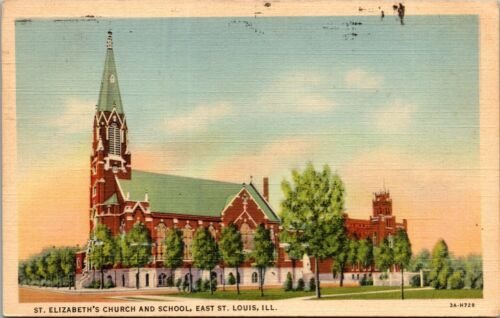
CASE STUDY
Documenting a Genealogy Brick Wall
As a genealogist, one of the most challenging problems is the inability to find a crucial record that would provide a missing link to a family's history. This case study illustrates the steps taken by us at Backlog, a professional genealogy service, to document a genealogy brick wall concerning the civil marriage record of Thomas J. Florence and Catherine Prelli[e].
Background
Thomas J. Florence and Catherine Prelli[e] were married on November 25, 1917, at St. Elizabeth Parish in East St. Louis, St. Clair County, Illinois. While the parish records confirmed the marriage, no corresponding civil marriage record was found in St. Clair County records or elsewhere in the state of Illinois. Evidence suggested that the officiant, Rev. Peter Engel, did not return the marriage license as required by law.
Illinois, Diocese of Belleville, Parish Records, St. Clair, East St. Louis, St. Elizabeth Parish, Marriages 1905-1932. Pg. 53, 25 Nov. 1917
Methodology
Backlog adopted a multi-step approach to document the genealogy brick wall concerning the missing marriage record of Thomas J. Florence and Catherine Prelli[e]. The methodology adopted included:
Contact with the Diocese of Belleville: Backlog contacted the Diocese of Belleville, of which St. Elizabeth Parish was part, to seek information on the movements of Rev. Peter Engel, the officiant. The Diocesan Chancellor shared that present-day law in Illinois requires an officiant to return a license within two weeks of the marriage occurring. The required time period in 1917 was unknown. However, an article from the Rock Island Argus dated 9 July 1869 listed marriage licenses that were issued between 1861-1868 and never returned, stating that the license should be returned within thirty days, and if not, a heavy fine could be imposed. This suggested that the time for returning a license in 1917 was between fourteen and thirty days.
Examination of Marriage License Returns: Backlog identified and consulted a set of marriage license returns, recorded at the Board of Health in East St. Louis, which included a marriage Rev. Engel performed three days after the Florence-Prelli marriage. This finding suggested that additional marriages he performed might also have been recorded from November 1917 through April 1918. Unfortunately, no other marriages performed by Rev. Engel could be found.
Analysis of Similar Cases: Backlog's genealogist emphasized that, in her three decades of experience, an unfiled marriage record is not without precedent. She cited several examples from neighboring Missouri where clergymen did not record their marriages civilly and left no civil registrations. In addition, during this period marriages might be filed up to a year after the actual marriage date. Therefore, Rev. Engel may not have returned the license to be recorded.
Examination of Records from Surrounding Counties: Backlog examined records from counties surrounding St. Clair County to determine whether the license was returned to one of them. These counties included Randolph, Jersey, and Perry Counties, which had a fee to perform a search. Given the unlikeliness of success, the decision was taken to allow the client to decide whether or not to pursue contact with these counties and incur further expenses. Backlog also searched several Missouri counties, including Cole, Callaway, Carroll, St. Louis County, and St. Louis City, where the couple had family ties.
Rejection in the form of a refund.
Conclusion
In conclusion, Backlog's search for the marriage record of Thomas J. Florence and Catherine Prelli[e] revealed that the officiant, Rev. Peter Engel, likely performed the marriage at St. Elizabeth Parish but did not return the license to be recorded in St. Clair County or elsewhere in the State of Illinois.
The methodology adopted by Backlog provides a framework for genealogists seeking to document their genealogy brick walls. By using a systematic and comprehensive approach that involves contacting relevant institutions, analyzing similar cases, and examining records from surrounding areas. While not all genealogy brick walls can be resolved, a diligent and thorough search can often yield valuable insights and help to expand the family's understanding of their history.


